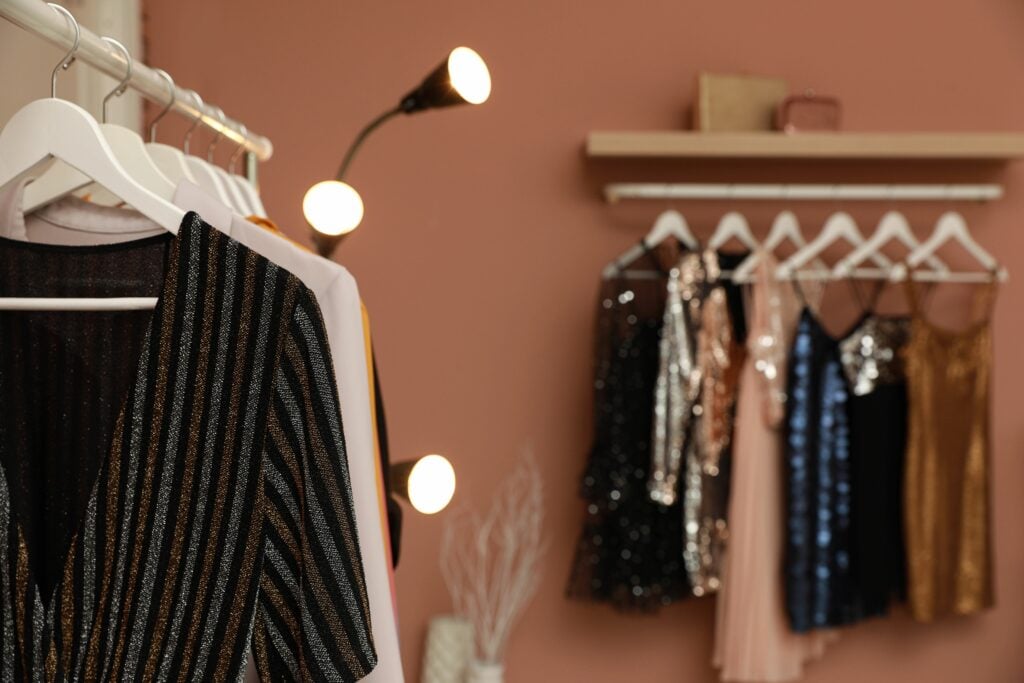In a comprehensive article outlining some of the big players in the fashion rental business, as well as a consideration of the broader segment’s significant struggles, Forbes contributor Richard Kestenbaum described the math of the business as adding up to “fraud, losses, and uncertainty.”
Will that be the case for the foreseeable future? It’s a question worth examining.
Caastle and Rent the Runway Facing Different, But Equally Serious, Woes in the Fashion Rental Space
Up first, the dual case studies presented by some of the bigger names in the fashion rental space — Caastle and Rent the Runway.
In the case of the former, Caastle has been making headlines most recently for the arrest and subsequent bail of former CEO Christine Hunsicker. Hunsicker stands accused of allegedly defrauding investors to the tune of more than $300 million over the course of the past six years, per AP News, and was released on $1 million in posted bail on July 18.
With Hunsicker having purportedly lied to investors, valuing the company at $1.4 billion at one point, the financials get more grim from there. Concerning Q2 2023, Hunsicker claimed operating profit of almost $24 million at the time: In actuality, operating profit for that quarter came in at a much more modest $30,000.
On the second case, regarding Rent the Runway, the story is less steeped in criminal allegations and more fixed around a nosedive in company fortunes. With Kestenbaum underscoring the fact that Rent the Runway was similarly valued at more than $1 billion at its peak, he pivoted to highlight that today, the total share value of the company rests at about $20 million.
Further, that investment would come with a boatload of debt — nearly $400 million, to be specific — as well as pretax losses of ~$75 million racked up over the past reported 12 months.
Residuals, Operational Barriers, Competition, and Ever-Changing Style Trends Also Hamper Contemporary Fashion Rental
Kestenbaum continued to delineate a number of other notable problems plaguing the existing fashion rental model, including the following.
- Residuals: Due to the fact that residuals, or “what an asset is worth when the lease [rental is over,” are so low in the fashion rental business, prices must be raised during the rental lifespan of each garment in order to maintain profit margins. High prices, of course, drive less demand.
- Operational barriers: When a piece of apparel reaches the end of its rental life, it must be shipped and dry cleaned before being sold. These added costs bite into bottom lines, particularly when dry cleaning is comparative “hard to get scale” on, per Kestenbaum.
- Stiff competition: Fashion-forward consumers have a variety of trendy, inexpensive, and ultimately disposable options at their fingertips as fast fashion continues to draw attention and spend. Vintage apparel and accessories also offer less expensive alternatives, representing a growing competitive market.
- Style trends: With fashion trends changing as quickly as the wind, rented garments can quickly lose appeal, abbreviating their period of peak rental potential.
After illuminating the more recent successes — although by his own admission, it’s difficult to pin down the true performance of the business — of Urban Outfitters’ Nuuly fashion rental enterprise, Kestenbaum concluded with a more upbeat opinion over the future of the business.
“Eventually, someone is going to figure out the fashion rental business and how to make money at it. When that happens, it’s likely to look a lot like other rental and leasing companies,” he began.
“It’s not a data and logistics business as Rent The Runway has described itself in the past, it’s a grinding business where understanding residual value is the key to success and proper pricing. Until then, failure and fraud will get headlines but over time, residual values and other costs will get managed and priced properly and profits can be made,” he added.


